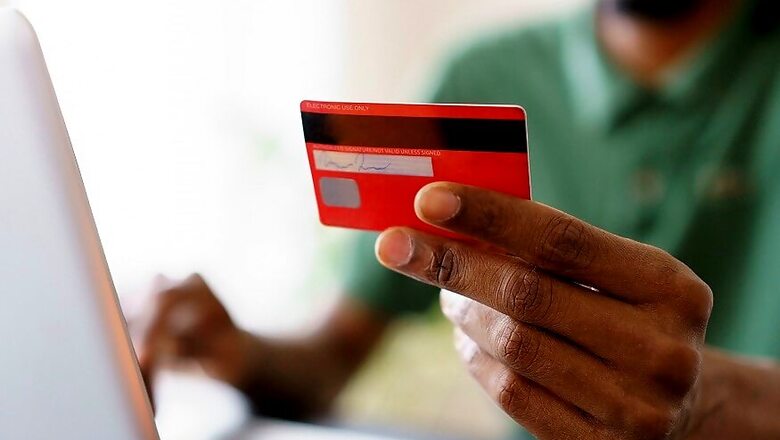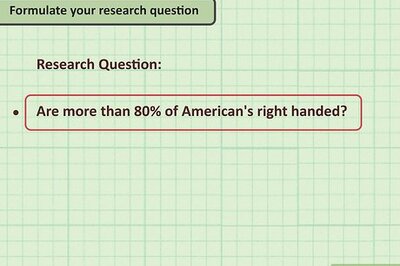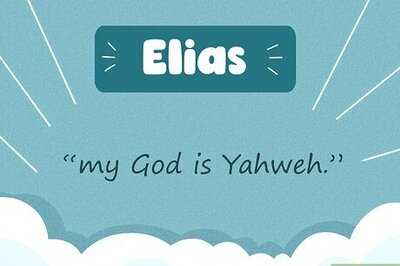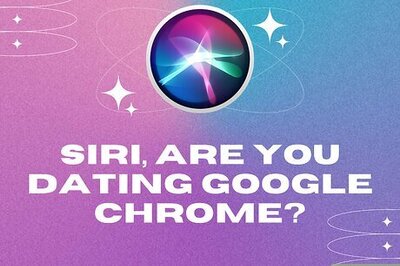
views
It turns out that cash, or money as you may know it, may be one of the most potent mediums for the Coronavirus to cling on to and spread among the community. After all, cash changes hands multiple times during any given day, and so many times in fact that it is hard to keep count. If an infected person handles a currency note in that chain, knowingly or otherwise, everyone who follows in that chain runs the risk of getting infected by Coronavirus, or COVID-19. Also, to make a cash payment, you will have to be in close proximity to another human being for the transaction to happen. At a time when social distancing is being urged, and practiced by many, cash payments aren’t exactly a good idea. If you want to stay protected from the Coronavirus, that is. The Government of India is making a renewed push to urge the citizens to use digital payments during this Coronavirus pandemic, for any good or services they procure.
The Prime Minister, the Reserve Bank of India (RBI) and the National Payments Corporation of India (NPCI) are all pushing for the adoption of digital payments. The RBI, on March 16, announced that digital payment methods including NEFT, IMPS, UPI and BBPS will be available round the clock, at least for the time being. Till we tide over the Coronavirus pandemic. “In the context of the efforts to limit the fallout of the corona virus pandemic by avoiding social contact and visit to public places, public can use these modes of digital payment from the convenience of their homes through online channels like mobile banking, internet banking, cards, etc. and avoid using cash which may require going to crowded places for sending money or paying bills,” says the RBI.
This is the time to ensure Social Distancing. Digital Payments help you do that. Let’s listen to these stalwarts and adopt digital payments. #PaySafeIndia @NPCI_NPCIhttps://t.co/qsNcs0EhKIhttps://t.co/imtK8x98XThttps://t.co/yzKPHiXEvDhttps://t.co/TMuZdPqR2O— Narendra Modi (@narendramodi) March 22, 2020
What the government wants you to do is make payments online, that is digitally. The push on Twitter is accompanied with hashtags #IndiaPaySafe and #PaySafeIndia to name a few. You can use your smartphone to make payments using mobile wallets such as the BHIM app, Paytm, PhonePe, Amazon Pay, Google Pay, WhatsApp Pay and more. Within these apps, the variety of payment methods can include UPI, credit and debit cards as well as net banking. If you have to go to a store to buy something, perhaps you could scan a barcode and make the payment using a mobile wallet. It is instant, and you won’t have to handle any currency notes.
The fears are real
Researchers from the National Institute of Allergy and Infectious Diseases in Hamilton, Montana, Princeton University, University of California, Los Angeles and the US Centers for Disease Control and Prevention (CDC) have found that SARS-CoV-2 and SARS-CoV-1 tend to stay and remain active for different periods of time on surfaces such as aerosols, plastic, stainless steel, copper and cardboard. They haven’t specifically tested currency notes, but safe to assume that the Coronavirus can remain active and infectious on these notes for at least some amount of time—and multiple people may handle it during that window. “SARS-CoV-2 was more stable on plastic and stainless steel than on copper and cardboard, and viable virus was detected up to 72 hours after application to these surfaces,” say the researchers.
Q.What is UPI?
UPI, or Unified Payments Interface, is an immediate real-time payment system that transfers funds between two UPI enabled bank accounts and can be used on a smartphone that has the mobile number linked with your bank account. The UPI method of payment is used by most mobile wallets and payment apps, including Paytm, Google Pay, Amazon Pay, PhonePe and WhatsApp Pay. In February, the NPCI had launched a campaign “UPI Chalega” to promote UPI as an easy, safe, and instant mode of payment. Chances are, your vegetable vendor will most likely have a UPI enabled bank account to receive payments instantly. Each payment is only authenticated by a UPI PIN which you would know as the account holder.
Q.What is BBPS?
Bharat Bill Payment System is an integrated bill payment system that allows you to make bill payments using any of the multiple modes of payment available. Every payment that you make for any utility, mobile, broadband bills, for instance get routed via the BBPS—be it an offline payment at a kiosk or a store or an online payment using mobile wallets including the BHIM app as well as mobile banking apps.
Q.What is NEFT?
These are bank to bank money transfers that require a payee to be registered via your net banking account to process this. Individuals, corporates and small businesses can use this to transfer money between accounts, held by another individual or business. NEFT is only available via your bank account, unlike UPI, which allows you to link your bank account to mobile payment apps to do transactions from your smartphone.
Razorpay, which is one of the largest payment gateways in India and used by multiple online stores and websites, says that between mid-February and mid-March, the online transactions on their platform grew by as much as 10 percent. Groceries and bill payments saw a spike. “overall digital spending saw an increase of about 10% on the Razorpay platform from February to March, owing to this virus outbreak. For the first time ever, Online Grocery Shopping climbed the ladder with a growth of 9%, and Government and Utility Bill Payments grew by 30%, representing precautionary measures that the customers are taking by staying indoors,” says the company in a press statement.
In February, the Chinese authorities ordered that all the cash in the country must be disinfected using ultraviolet or heat treatment, so as to reduce contagion risks.
Just last week, restaurant aggregator and delivery service Zomato announced the Contactless Delivery option on its platform, for any meal orders that you may place, as part of their response to the Coronavirus outbreak. The way this works is simple. You place an order for a meal with any of the Zomato partner restaurants via the Zomato app and select the Contactless Delivery option for your order while checking out. The delivery executive will follow that order and leave the food package on a clean surface (such as a table or a platform) outside your door, click a photo of that and send it to you. Then you can safely pick up that order package and enjoy your meal. Important to note that the Contactless Delivery option is available only on prepaid orders, and not on any pay on delivery orders. The idea is to enhance the social distancing bit by not allowing interaction between the delivery executive, who Zomato refers to as Zomato Valet, and the person who is receiving the order. The Contactless Delivery option will be available for all restaurants offering food delivery services on the platform.


















Comments
0 comment